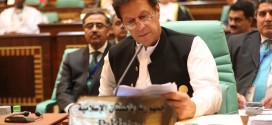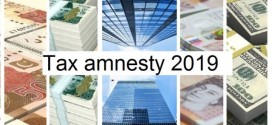By: Waqar Masood Khan
There is a lot of flux that characterizes the world economy at present. While developed markets are performing exceptionally well, emerging markets (EM) are facing high uncertainty. More importantly, a very large number of market pundits are predicting that a great recession is just around the corner.
The emerging markets are under huge stress. Their currencies have depreciated significantly during 2018: Argentina (51pc) Turkey (38.7), Brazil (20.5), Russia (16pc), South Africa (16.0) and India (11.6pc) have all experienced significant erosion of value of their currencies. Argentina is the worst hit and has sought a life-line from IMF, a fate many more countries are destined to in the years to come.
To understand what’s happening, consider the recent IMF report which indicates that the global debt has surpassed the pre-crisis level, skyrocketing to nearly double that amount to $200 trillion. World GDP in 2017 was around $80 trillion, indicating the global debt is 2.5 times the global GDP. This is an unsustainable level of debt and increasing number of economists are predicting that it would not be paid off. The low interest rate environment spurred by the so-called quantitative easing is finished and US Federal Reserve is raising interest rates, which is pushing dollar relative to other currencies, hurting the emerging market economies with their currencies losing values, and flight of capital.
The rapid and sustained currency depreciation is the classic sign of evolving crash. Large EM currency losses would have an impact on investors’ holdings. Franklin Templeton has already notified its losses. Others would be doing soon. The process of rebuilding capital to provide for losses would require premature sell-off of some assets, whose values may not be the same as currently valued. This would trigger a fresh cycle of booking losses and providing more capital by premature divestment. It is estimated that the advanced countries’ exposure in EMs is as high as nearly half their GDP (which is around $50 trillion).
The inverted pyramidal nature of fractional-reserves banking and financial system guarantees that there is no safe return to the ground. The trigger for crash would be provided by rising interest rates on the face of declining collateral values and unsuccessful attempts to safely deleverage the exposed positions. Experts wonder how the next crash would be handled, as it is arriving precisely at the conclusion of the method adopted for its resolution, that is QE. They find it difficult that the central banks would again expose their balance sheet by a high multiple to buy corporate securities.
Banks in EMs are saddled with heavy infected portfolios. A major restructuring is inevitable which would require huge budgetary costs, further weakening their fiscal positions and undermining current account positions. The EMs are also vulnerable to oil price shocks which governments find difficult to pass on to the end consumers, resulting in elevated demand that exacerbate current account pressures. Weakening current account is a sure recipe for increasing pressure on currency, and the cycles noted above in financial markets would be activated in the real side also.
Read More: The State of the Global Economy in 2018
Oil has crossed $85 and bets are on for it to hit $90 when Iranian sanctions fully kick in. The slow-down looks imminent as world demand would be affected because of rising prices. The full impact of Iran sanctions has yet to come. The OPEC countries would not be able to replace 2.5 million barrels per day supplies from Iran. The uncertainties would give rise to uncovered risks and hence it is difficult to predict how the world economy would react to this and other shocks.
How is Pakistan going to be affected by these developments and whether we are ready to face the emerging challenges? Mercifully, even though we engage in a significant volume of international trade, Pakistan is not steeply integrated in the international financial system. Portfolio investment, the most vulnerable part, is not very large and yet the process of sale-off from Pakistan has been going on now for some time. Our first bond, after the resumption of borrowings from the capital markets, would be maturing in April 2019, unless, of, course, we plan to issue new bonds earlier. Refinancing needs would be there and our standing in the market would be affected if we don’t improve our economy.
For more than a year, our market is down, and looks set to decline further as it did in October. Some disturbing developments are giving rise to this scenario. First, the first quarter oil advisory committee report indicated the lowest demand of petroleum products in last four years. Most notable was the furnace oil consumption which was down nearly 60pc, indicating the impact of rising circular debt and load-shedding. Second, the talks with the Saudi delegation did not result in any helpful outcomes regarding their support. In fact, some confusing signals emanated, such as no deferred payments sales of oils, only investments in the refinery, which means no BOP support.
Third, the SBP reserves have declined to $8.4 billion and if we take out the $2 billion of Chinese deposit which was given to caretakers in their last day in the office, the actual reserves are $6.4, almost the same as inherited by Nawaz Sharif government in June 2013. Finally, the Fund mission, which has concluded its assessment, issued a statement that presents a dismal state of our economy. The mission has pointed out that the measures so far adopted by the new government are insufficient to stabilise the economy, which is beset with high fiscal and current account deficits, accommodative monetary policy and over-valued exchange rate. There are also deep structural reforms that need to be undertaken to create conditions to provide necessary platform for achieving sustainable growth. The mission has recommended that corrective actions should be adopted immediately to forestall further erosion of economic viability.
This is not a pretty scenario nor are we ready to face tougher challenges than what we are already facing. It is, however, clear that unless we put our house in order, a bigger challenge could have highly undesirable consequences. It is simply not fathomable why the government has not so far laid out a plan for economic revival. Even to this day, markets and investors are asking where we are heading. The cards so far shown by the government are not impressive as is evident from the parting assessment from the Fund. Nearly three months in the office is a long time. We need to move fast to guard against the ominous clouds gathering on the horizon.
Courtesy: Pakistan Today
 Jahangir's World Times First Comprehensive Magazine for students/teachers of competitive exams and general readers as well.
Jahangir's World Times First Comprehensive Magazine for students/teachers of competitive exams and general readers as well.



